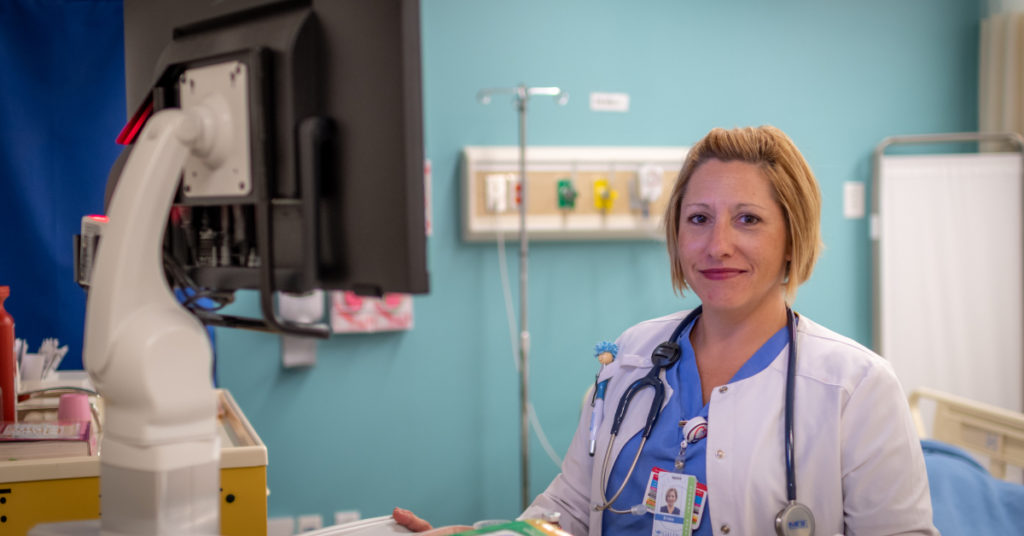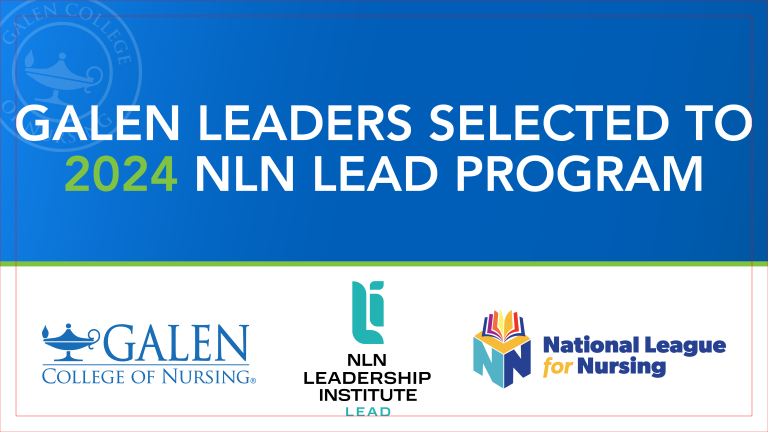ADN student Ericka Bowman is thrilled to trade in her corporate attire for Galen College of Nursing’s blue scrubs. Thirteen years ago, Bowman’s daughter was born at 25 weeks, and she spent four months in the NICU with her preemie.
“That was the turning point for me and why I wanted to become a nurse,” Bowman said.
So, when Bowman researched nursing schools, she learned about the Tampa Bay campus’ Ruth Corcoran Simulation Hospital, which offers an ER, ICI, Pediatric, and OB units.
“Having the ability to have access to state-of-the-art equipment enhances what we’re learning. I’m a very hands-on learner,” she said. “It allows us to take away some of that anxiety ahead of time before we get out there into the real world and care for our patients.”
The facility includes six high-fidelity mannequins, which includes one that demonstrates the birthing process and a pediatric model. High-fidelity mannequins allow students to assess vitals and administer medication, said Simulation Lab Technician Dhonnie Labang.
“Let’s say the student decides to give the patient oxygen or give specific meds. Once we see that student give specific meds or any kind of intervention, there’s an option in a mannequin’s computer for the vitals to react to that intervention accordingly,” he explained.
The mannequins also can interact with students. Even though the mannequin’s speaker system has set phrases, Labang said he and the other two simulation technicians can speak through microphones to simulate a patient in a real hospital environment.
“If it’s a guy who can’t breathe, we do our best to mimic someone who is breathless,” he said. “Sometimes our students will tell us, ‘It’s just a mannequin, it’s just a doll.’ But when they hear the voice coming from a human, like myself or the other sim techs, then they get into a rhythm as if they’re with a real patient.”
Students get hands-on training with intravenous procedures such as inserting a Foley catheter, an IV, or a breathing tube, Labang said.
“And the mannequins can show a flash of blood or urine if they do the procedure incorrectly,” he said. “Of course, there are no real bodily fluids, just food coloring and distilled water.”
For more complex scenarios, instructors orchestrate emergency scenarios, which include life-saving measures. Students are assigned different roles such as charge nurse, on-the-scene nurse, and triage nurse, he said.
“They have to manage that disaster with several patients, and the nurses must work together to start IVs, give meds, and so on,” Labang said. “It’s a mega-sim that requires a lot of delegation.”
After the scenarios, students provide their feedback during a debriefing. Some students get “stage fright” because they are performing the procedures in front of their peers and instructor on video, Labang said.
“Some students will say, ‘I want to do more sims’ because it helps them understand their strengths and weaknesses and practice their skills from what they learned in lab and theory,” he said. “And some students who have stage fright don’t like sims as much because they feel like they’re being judged. But we always tell them that this is a safe place to learn, and you can learn from those mistakes.”
ADN student Tera Corum doesn’t mind making mistakes during the scenarios. She calls the experience “exciting and nerve-wracking, but it’s one of my favorite parts” of my nursing education.
“Mistakes are OK because we are learning what to do,” she said. “I’ve talked to my sister, who has been a nurse for 37 years, and she didn’t have the benefit of the sim lab. She loves hearing my simulation stories, and she’s ever so jealous. The labs are a definite advantage.”
ADN student Adrianna Gonzalez believes the simulations are preparing her for a realistic nursing environment. It also has made her feel more at ease when caring for patients.
“Simulation has helped us to start performing proper bedside manner and enhancing our nursing skills in a way that’s ethical and professional,” she said. “It introduces a hospital atmosphere for us and makes us more comfortable.”
Like Gonzalez, Bowman also is happy with the experiences she has learned in her simulation classes. She said the scenarios provide the best environment for her to build the confidence she will need for her patients’ well-being.
“When we look at the big picture of us eventually working in the real world, what better place is there to practice these skills in a place where you are safe,” Bowman said.





